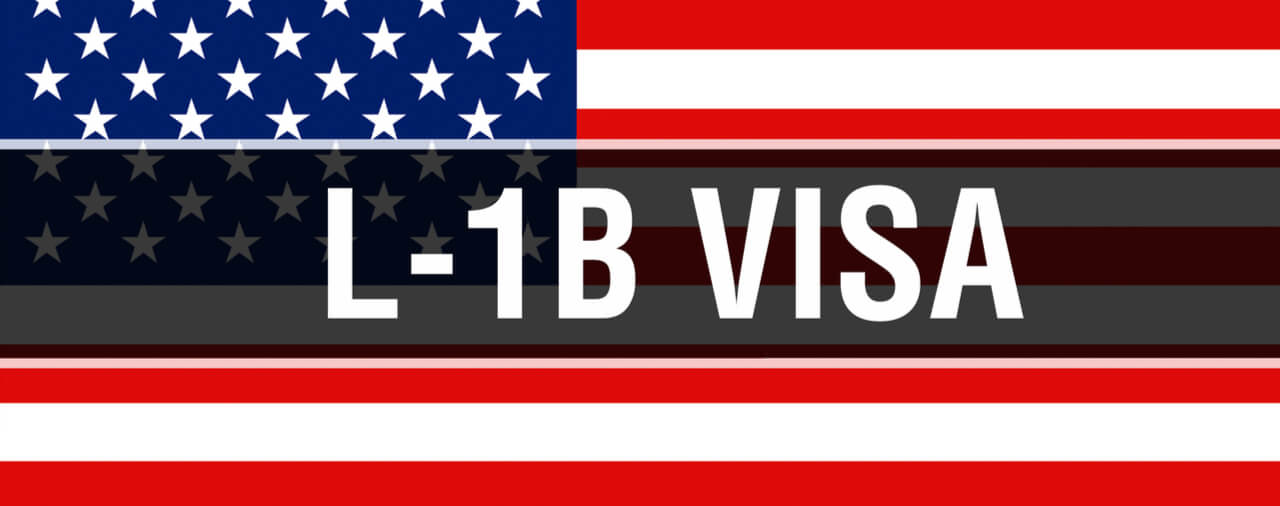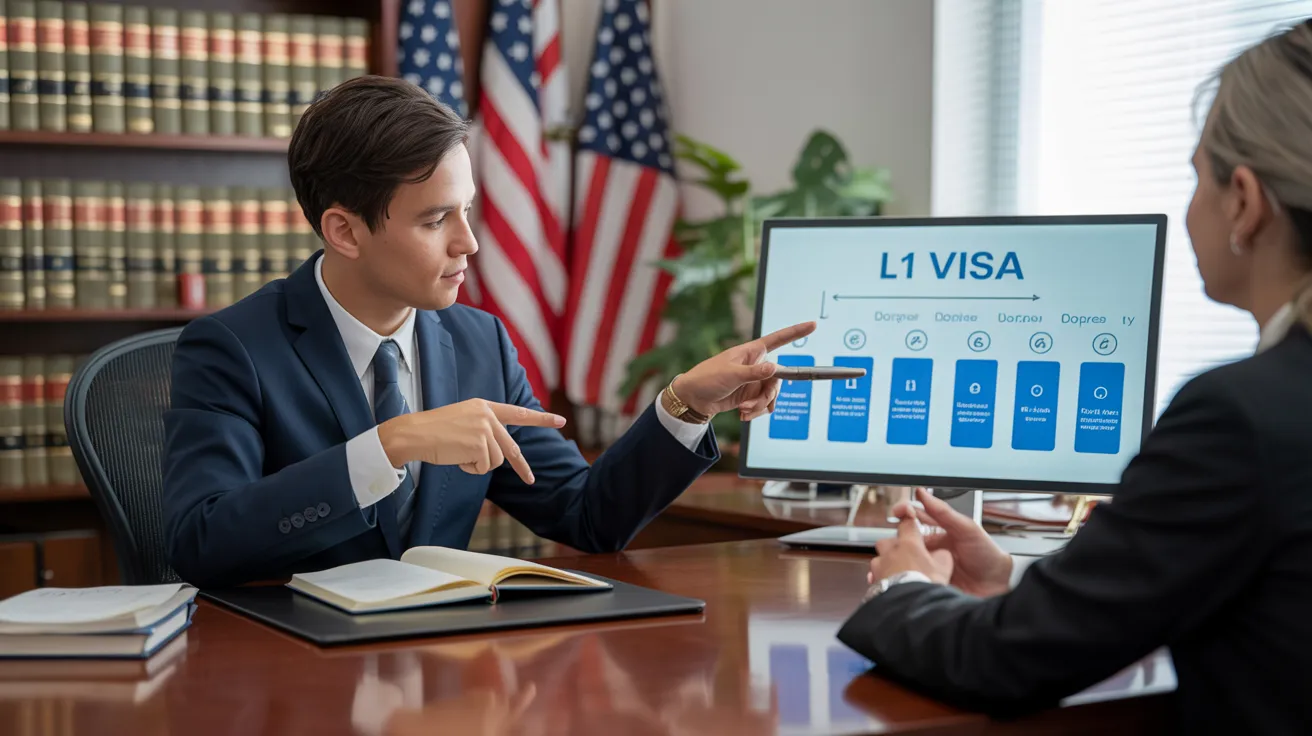Every little thing You Required to Learn About the L1 Visa: Benefits, Needs, and Much more
The L1 Visa works as an important device for multinational companies looking for to move employees to the United States, assisting in both functional effectiveness and the transfer of specialized expertise. With unique classifications for execs and specialized professionals, this visa offers various benefits, consisting of prospective paths to permanent residency. Nevertheless, understanding the eligibility needs and application process is important for a successful shift. As we analyze the complexities of the L1 Visa, it becomes clear that navigating its complexities is vital for organizations intending to utilize global skill properly. What difficulties might you come across along the road?
Overview of the L1 Visa

Sorts Of L1 Visas

Several types of L1 visas provide to the diverse needs of international companies aiming to move employees to the United States. Both main classifications of L1 visas are L1A and L1B, each created for particular functions and obligations within an organization. L1 Visa.The L1A visa is meant for managers and executives. This group allows companies to transfer individuals who hold supervisory or executive settings, allowing them to oversee operations in the U.S. This visa is valid for a first duration of as much as three years, with the opportunity of expansions for an overall of as much as seven years. The L1A visa is specifically valuable for companies looking for to develop a solid leadership presence in the united state market.On the other hand, the L1B visa is assigned for workers with specialized knowledge. This includes people who possess sophisticated competence in specific areas, such as exclusive modern technologies or unique procedures within the company. The L1B visa is additionally legitimate for a first three-year period, with extensions offered for up to five years. This visa category is suitable for companies that require employees with specialized skills to enhance their procedures and maintain an affordable side in the U.S.Both L1A and L1B visas permit double intent, indicating that visa holders can obtain permanent residency while on the visa. Comprehending the distinctions in between these 2 categories is important for services preparing to browse the intricacies of staff member transfers to the USA effectively
Eligibility Requirements
To certify for an L1 visa, both the company and the staff member should meet specific eligibility requirements established by U.S. immigration authorities. The L1 visa is created for intra-company transferees, allowing international firms to move employees to their united state offices.First, the employer should be a certifying organization, which implies it must have a moms and dad company, branch, subsidiary, or affiliate that is working both in the united state and in the foreign nation. This partnership is necessary for demonstrating that the worker is being moved within the very same business structure. The company needs to additionally have been doing service for at least one year in both locations.Second, the employee must have been utilized by the foreign business for a minimum of one constant year within the three years coming before the application. This employment should be in a managerial, executive, or specialized knowledge capacity. For L1A visas, which satisfy supervisors and executives, the employee needs to demonstrate that they will remain to operate in a similar ability in the U.S. For L1B visas, intended for workers with specialized understanding, the specific should possess special experience that adds considerably to the firm's operations.
Application Process
Steering the application procedure for an L1 visa includes numerous vital steps that need to be finished accurately to ensure an effective outcome. The very first step is to identify the proper category of the L1 visa: L1A for supervisors and execs, or L1B for employees with specialized understanding. This distinction is considerable, as it affects the paperwork required.Once the group is determined, the U.S. employer must submit Form I-129, Application for a Nonimmigrant Employee. This kind should include thorough information about the business, the employee's role, and the nature of the job to be executed in the U.S. Accompanying paperwork usually includes evidence of the connection between the U.S. and international entities, proof of the worker's credentials, and info relating to the job offer.After entry, the U.S. Citizenship and Migration Provider (USCIS) will certainly evaluate the application. If authorized, the worker will be informed, and they can then look for the visa at a united state consular office or consular office in their home nation. This involves finishing Form DS-160, the Online Nonimmigrant copyright, and arranging an interview.During the interview, the applicant should present numerous files, including the approved Form I-129, proof of employment, and any additional supporting evidence. Adhering to the meeting, if the visa is provided, the staff member will certainly get a visa stamp in their key, enabling them to get in the U.S. to help the funding employer. Correct preparation and extensive click here documentation are key to maneuvering this procedure properly.
Benefits of the L1 Visa
One of the remarkable benefits of the L1 visa is its capability to help with the transfer of vital employees from international offices to the United States. This visa is particularly valuable for international business seeking to maintain consistency in operations and leadership throughout boundaries. By allowing execs, supervisors, and specialized employees to function in the U.S., organizations can guarantee that their most important talent is available to drive service objectives.Another significant benefit of the L1 visa is its fairly straightforward application procedure compared to other job visas. Organizations can seek for the L1 visa without the demand for a labor accreditation, which simplifies the employment of foreign staff members. Moreover, the visa can be approved for an initial period of approximately three years, with the opportunity of expansions, helping with long-term assignments.The L1 visa likewise provides a path to permanent residency. Workers on L1A visas (for supervisors and executives) can get a Permit after one year, expediting their adjustment to irreversible status. This function is an attractive reward for gifted people searching for stability in the U.S. workforce.Additionally, L1 visa owners can bring their prompt family members to the U.S. under L2 condition, enabling partners and kids to reside and study in the nation, boosting the overall appeal of this visa classification. On the whole, the L1 visa acts as an essential device for global businesses, promoting cross-border cooperation and ability mobility.
Typical Difficulties
While the L1 visa provides countless benefits for multinational companies and their workers, it is not without its challenges. One notable difficulty is the stringent documentation and qualification demands imposed by the united state Citizenship and Migration Solutions (USCIS) Companies have to supply in-depth proof of the foreign worker's qualifications, the nature of the business, and the certifying relationship in between the U.S. and international entities. This procedure can be time-consuming and may call for legal proficiency to browse successfully.Another obstacle is the potential for examination during the request process. USCIS police officers might question the authenticity of business procedures or the worker's duty within the organization. This analysis can lead to hold-ups or perhaps rejections of the copyright, which can substantially influence the business's operational plans and the worker's career trajectory.Furthermore, the L1 visa is tied to the funding employer, which suggests that work changes can complicate the visa standing. If an L1 visa owner desires to change companies, they should often seek a various visa group, which can add complexity to their immigration journey.Lastly, keeping conformity with L1 visa regulations is important. Companies need to ensure that their worker's duty straightens with the first application and that business remains to meet the qualification needs. Failing to do so can cause cancellation of the visa, affecting both the staff member and the organization. These difficulties require thorough preparation and ongoing administration to assure a successful L1 visa experience.
Tips for Success
To successfully browse the L1 visa process, thorough prep work is critical. Beginning by extensively recognizing the details needs for the L1 visa group you are using for, whether L1A for managers and executives or L1B for employees with specialized expertise. Collect all essential documents early while doing so, consisting of evidence of your employment background, business framework, and the nature of business operations.Engage lawful advise experienced in immigration regulation to direct you with the ins and outs of the application. A lawyer can assist ensure that your application is full, accurate, and compelling. They can also assist in preparing for potential ask for evidence (RFEs) by proactively addressing locations that might increase questions.Additionally, keep clear communication with your employer, that should supply essential assistance for your application. L1 copyright copyright. Verify that they recognize their responsibilities, including submitting the essential petitions and providing documents that confirms your role in the organization.Prepare for the visa meeting by practicing response to common inquiries concerning your expert background and the nature of your employment. Demonstrating confidence and clearness can greatly impact the outcome of your application
Often Asked Concerns
Can Household Members Accompany L1 Visa Owners?
Yes, relative can come with L1 visa owners. Partners and unmarried kids under 21 years old are qualified for L2 visas, which enable them to live and examine in the United States throughout the L1 owner's stay.
Exactly How Long Can L1 Visa Holders Remain In the U.S.?
L1 visa owners can originally remain in the U.S. for approximately three years (L1 Visa). This duration might be prolonged, enabling a maximum stay of seven years for L1A visa owners and five years for L1B visa holders
Is the L1 Visa a Double Intent Visa?

Can L1 Visa Holders Request a Permit?
Yes, L1 visa holders can obtain an environment-friendly card - L1 Visa. The L1 visa sustains dual intent, enabling owners to seek irreversible residency while maintaining their non-immigrant status, promoting a smoother transition to a permit
What Occurs if an L1 copyright Is Refuted?
If an L1 copyright is rejected, the candidate may obtain a notice outlining the reasons for denial. L1 Visa. They can appeal the choice, reapply, or discover alternative visa options depending on their circumstances and credentials
Verdict
In recap, the L1 Visa functions as an important tool for multinational firms looking for to transfer workers to the United States. Comprehending the differences in between L1A and L1B categories, along with the qualification requirements and application processes, is vital for successful navigating of this non-immigrant category. The benefits provided, including streamlined applications and pathways to irreversible residency, further enhance its appeal. Dealing with typical difficulties successfully can lead to a more positive end result in the copyright process.